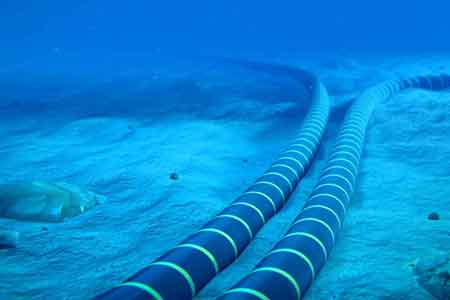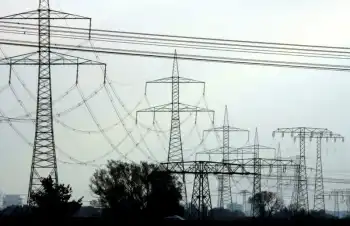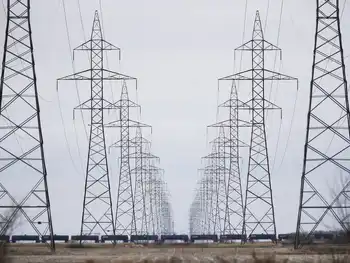Passamaquoddys air concerns over LNG terminal
By Bangor Daily News
Protective Relay Training - Basic
Our customized live online or in‑person group training can be delivered to your staff at your location.

- Live Online
- 12 hours Instructor-led
- Group Training Available
This has been, after all, a divisive summer at Sipayik, the Passamaquoddy name for the Pleasant Point reservation.
Barely six weeks ago, the community of 650 was jolted by newspaper headlines proclaiming the tribe's deal with an Oklahoma energy partnership to consider the construction of the LNG facility on the 200-acre reservation.
The trade-off for jobs and cash would lift both the Passamaquoddy people and the Washington County economy out of dire straits, the project's supporters say.
The arrangement was the work of the tribe's governor, lieutenant governor and the six voting members of the Tribal Council.
That bothered enough community members to call for the out-of- cycle native gathering Sunday, rather than wait until the usual date in August.
Much of Sunday's discussions revolved around questions. Big questions.
"Nobody knows anything about LNG, except for the council," said Madonna Soctomah, the Passamaquoddy state representative from 1990 to 1994. "We read it in the newspaper."
Signs are appearing on lawns: "Think of the children, not money." "No LNG - land is forever."
Questions are endless. What's LNG, anyway? Why Pleasant Point? Do tribal members have a voice? What about traditional values? And, now what?
Even one of the newest members of the council, Philip Farrell Jr., isn't clear on what happens next.
"I have no clue. I'm asking the same question," Farrell said Sunday. "We just got a petition that some people want to be heard. They'll get their meeting this week, but the decision belongs to the governor and the council."
The only thing that has been agreed to so far, Farrell said, is that the council and Quoddy Bay LLC, a Tulsa, Okla., energy partnership, move forward with a feasibility study. That much was announced June 9.
Other tribal leaders, including Gov. Melvin Francis and Lt. Gov. Mark Altvater, could not be reached for comment.
There could be as many as 1,000 jobs during the construction phase and more than 70 full-time jobs once the facility is up and running. High-end jobs could pay more than $60,000 a year.
LNG is natural gas that has been compressed for transport. Ships can carry it long distances and off-load it at a port. The Oklahoma partnership wants the terminal to connect with the Maritimes & Northeast Pipeline near Baileyville. That line runs from Sable Island off Canada's coast to Portland, where it moves natural gas to Massachusetts.
The terminal, an idea that other coastal towns in Maine have already considered or rejected, would be built on 42 acres on waterfront behind tribal offices.
The tribal leaders' embrace of a future involving the LNG industry has so far failed to gain significant community support, tribal members say. Many members of the Pleasant Point community aren't sure they want to wake up to a new landscape with tankers parked for three days each week unloading the gas.
They would lose the bay that they still cherish as the home of the "little people" of Wabanaki legends.
On Sunday, Veronica Newell motioned toward Gleason Cove, where the terminal would be positioned. Clear-cutting of the woods at nearby Springwater has already taken place for 28 tribal-approved home lots. But Newell suspects the new road cuts are more likely leading to where the terminal would go.
"Seeing all that taken away - those are the woods where we grew up," she said. "It's not the same anymore."
Her daughter, 11-year-old Tabitha Carroll, has her own concerns. "What happens to people who clam?" she asked. "How I am supposed to make my summer money?"
Some members of the community said they feel that LNG would force lifestyle changes, ones that could forever affect the way their children and grandchildren will live.
It's not just the long-term environmental effects or the safety issues that the community is uncomfortable with. To many, letting in an LNG facility represents a crushing of Passamaquoddy values.
"To tell you the truth, I still don't know too much about it," said Fredda Paul, 59. "But it doesn't sound too good. It could be very dangerous to the area. And it doesn't seem to be traditional for native people."
David Moses Bridges is one of those working to educate his neighbors about what it would mean to have such industry in their midst. He has printed fliers and T-shirts, secured a video and identified Web sites that address LNG facility issues.
On Sunday, he was talking up a new group whose Passamaquoddy name means "We Take Care of Our Homeland."
"No amount of cash can buy what we already have," Bridges said, "which is a beautiful community of elders and children committed to our land, our past and our future."











